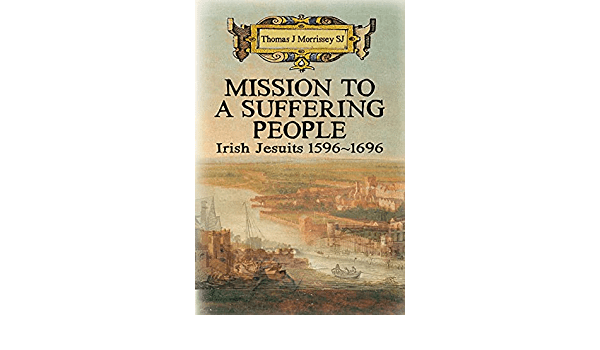Mission to a Suffering People: Irish Jesuits 1596-1696
by Thomas J. Morrissey SJ (Messenger Publications, €19.95/£18.95)
The Jesuit historian T. J. Morrissey is well known for his books on the Irish trade union movement and on modern Church history, especially in Dublin. But he has also written widely about the more distant past. His new book deals with the 17th Century, which is often seen today as the period when the modern era in Europe really began. Certainly it was a period of turmoil, conflict, pain, and suffering in a way quite akin to recent days rather than to the middle ages.
Add to this the fact that much that happened in Ireland was often an outcome of what originated in Europe, such as the Reformation and its aftermath. Movements that began in central and southern Europe eventually washed over the bogs of Mayo and the mountains of Donegal.
Overview
In this overview Fr Morrissey tells the tale of the period through the lives of four Jesuits, some familiar, others less so. They are James Archer (1550-1620), Richard Conway (c.1573-1626), Robert Nugent (1577-1652), and Stephen Rice (1625-1699). Their experiences in Dublin, Kildare, Kilkenny and elsewhere in their very different ways illustrate vividly the course of the century in a very human way that will attract many readers.
The book manages to encompass the tragic turmoil for the Irish people of the 17th Century. That century oddly enough seems to contain a large number of the events and personalities that seem to epitomise Irish history for many people: the Counter-reformation, the Confederation of Kilkenny, Cromwell’s Irish campaigns, the Restoration of Charles II, the advent of William III, and the ‘Broken Treaty of Limerick’. Quite a catalogue altogether.
Admired
The much admired 18th Century that followed has the appearance of a more settled period. It was, however, notorious for the Penal Laws, legal instruments that had their origin in the hatreds and fears of the previous century. But we have to remember that (as Fr Francis Finnegan pointed out long ago) the 17th Century that Fr Morrissey deals with, was the peak of Ireland for martyrs and confessors: hardly a place in the country seems to have been free of blood.
For any reader who wishes to have an approachable yet detailed account of a very confusing era Mission to a Suffering People provides insights which will serve them well in trying to bridge the great gulf that separates medieval Catholic Ireland from the multicultural society that we have today.


 Peter Costello
Peter Costello
